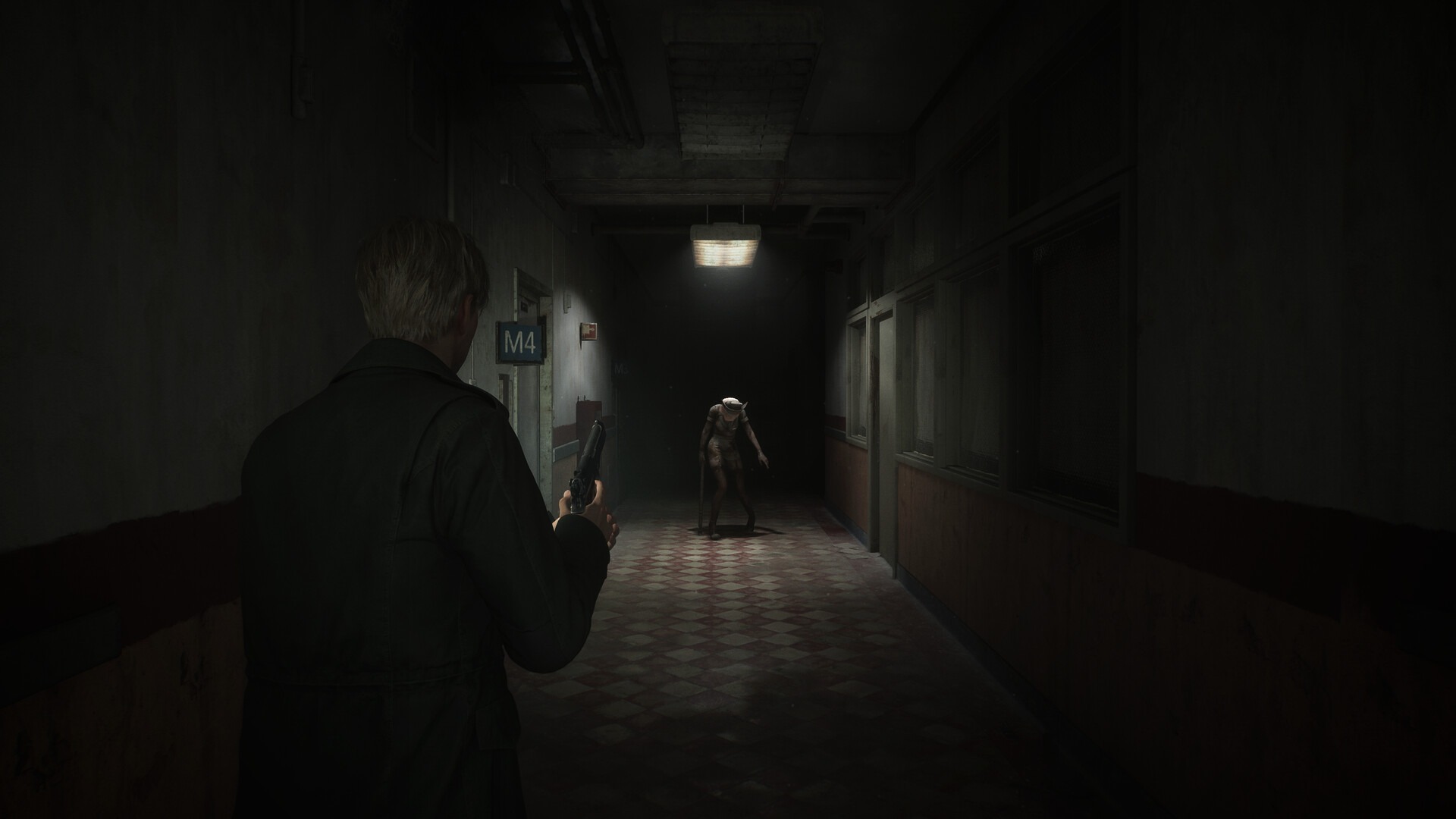[Ed. note: This post contains spoilers for the end of season 1 of Ahsoka.]
If you’re up to date on Ahsoka, you’ll know that the Disney Plus show’s season 1 finale boasts a lot of lightsaber action. Sabine (Natasha Liu Bordizzo), Ahsoka (Rosario Dawson), and Ezra (Eman Esfandi) fight a whole lot of zombified Night Troopers and a magic sword-wielding Morgan Elsbeth (Diana Lee Inosanto). Somewhat predictably, the former prove impressively resilient to being sliced and diced — zombies are tricky, after all — however, the slash to the chest sustained by the latter during her climactic duel with Ahsoka ultimately proves fatal. Which is, frankly, a relief, as the Star Wars franchise could really do without any further laser-sword-related controversies.
See, there’s been quite a bit of harumphing among fans of Lucasfilm’s galaxy far, far away that the saga’s most iconic weapon has lost its edge (literally). Over the past 46 years, Star Wars media has taken great pains to establish that coming up against an opponent armed with a lightsaber is serious business. A well-placed cleave could cost you one or more limbs (if not your head), while a thrust to your torso meant game over entirely. This logic held across the franchise’s pre- and post-Disney eras — until the House of Mouse started making live-action Star Wars TV shows, that is.
2022 miniseries Obi-Wan Kenobi started the recent small-screen trend of nonlethal lightsabers by having not one but two characters survive seemingly fatal stab wounds. Ahsoka continued this trend, with Sabine Wren (Natasha Liu Bordizzo) already back on her feet in episode 2 after being run through by Shin Hati (Ivanna Sakhno) in episode 1. Predictably, the internet immediately declared that Sabine’s survival and recovery were dubious — by the standards of both real-world and Star Wars medical science. But are the naysayers right? Polygon went to an actual trauma expert to find out.
:no_upscale()/cdn.vox-cdn.com/uploads/chorus_asset/file/24945314/ahsoka_sabine_stab_lightsaber_jedi.png)
Our expert is Dr. Owen McCabe, an MD board-certified in general surgery and surgical critical care. He’s a fellow of the American College of Surgeons and is currently a trauma and acute care surgeon. He works for District Medical Group and staffs Valleywise Health Medical Center in Phoenix, Arizona. Aside from that, he’s a professor of surgery at Creighton University and the associate program director for the Surgical Critical Care Fellowship. Crucially, McCabe also considers himself a Star Wars fan (although he admits to dropping off a bit after the prequels), and he dialed into our call having done “prep work,” which we took to mean “spent several hours on Wookieepedia.”
We got straight to the point (pun fully intended) in our conversation with McCabe, opening with the most obvious question: What damage does Sabine sustain when she’s stabbed in Ahsoka episode 1? “So, the immediate effects obviously would be primarily pain and the physical and psychological responses to the shocking experience of sustaining this wound,” he says. “Beyond that, it very much depends on the exact location of the injury and what organs or systems are impacted.”
What about the cauterization effect of Shin’s lightsaber — would that make Sabine’s injuries less severe or buy her more time? McCabe dismisses the idea, correctly noting (according to our own stack of Star Wars guidebooks) that the Jedi and Sith’s signature swords radiate surprisingly little heat. As such, he theorizes that when a lightsaber burns someone, this is the result of thermal spread, a surgical term for when the heat of the blade itself transmits into tissue adjacent to a cut. Given that a lightsaber theoretically has a similar edge to the plasma blades favored by plastic surgeons — which don’t cause significant thermal spread — McCabe argues their cauterization capabilities are somewhat overstated.
“I think, based on my understanding of lightsabers, my thoughts about tissue transfer, and a little bit [of] extrapolating from our plasma blade, that the primary thing that’s gonna happen to tissue that comes into contact with the lightsaber is it’s gonna be vaporized,” McCabe says, noting that in terms of cauterization, “there’s sort of conflicting thoughts.”
“If you look at Star Wars media, you see examples where both bleeding wounds and cauterized wounds are generated […] and the reality is that cauterization would be fairly superficial. I don’t think you’d see a lot of depth of tissue penetration largely because the duration of contact is going to be low, and […] I don’t think that’s going to meaningfully impact the amount of, for example, blood loss that you have.”
So, according to McCabe’s assessment, when the credits roll on Ahsoka episode 1, some of Sabine’s insides are “completely gone” and she’s at serious risk of bleeding out. This sure sounds like the “Sabine should be dead” camp was on the money, right? Not necessarily, he says.
While McCabe acknowledges that someone in Sabine’s condition would need treatment “as quickly as possible,” he qualifies that statement by citing the “golden hour” — the concept that the “first hour of resuscitation is really critical to [a patient’s] overall outcome.” Given Ahsoka arrives more or less as Sabine is being stabbed, it’s a reasonable assumption she received medical attention within the golden hour.
And from here, the outlook gets decidedly rosier for our would-be Jedi. “A lightsaber wound maybe is more comparable to a gunshot wound in that it’s going to impact a large number of structures potentially and in a devastating way,” McCabe says. “So, it would depend on the mechanics of the stab wound, the stab wound from the front to the back, [but] as long as it’s not in the center of the abdomen, I think you’ve got a reasonable chance of survival.”
Not even the whole “organ vaporization” thing — which sounds like an instant death sentence — should meaningfully impact Sabine’s prognosis. McCabe thinks these are injuries a trauma unit could potentially treat here in the real world, even without the aid of the Star Wars universe’s tissue-regenerating bacta tank technology.
“Injuries to the spleen, to a kidney — we can simply remove those injured structures,” he explains. “Injuries to the bowel, the injured segment can be removed and then new connection or diversion of the contents of the digestive tract can be done. You know the liver, for example, you can take out large portions of the liver safely in terms of the long-term outcome for the patient. And so, even with tissue destruction, there’s a reasonable chance that a patient who has not exsanguinated [died of blood loss] prior to arriving at the hospital would have injuries that we could potentially repair.”
That’s more good news for Sabine, as shots of her being impaled in Ahsoka episode 1 and the scar she sports in episode 2 indicate that Shin’s lightsaber did indeed skewer her liver. So yes, a promptly administered bacta bath probably would have been enough to save Sabine’s life, incredible as it may seem to some. Her rapid recuperation is another story, though. When asked how long it would take someone in Sabine’s position to be fighting fit again, McCabe was emphatic: months.
:no_upscale()/cdn.vox-cdn.com/uploads/chorus_asset/file/24945346/Screen_Shot_2023_09_22_at_15.56.02.png)
“It would be rare for a patient who’s going to have a good long-term outcome to be in the hospital for more than a few weeks, but often patients who sustained significant injury aren’t immediately ready to go home,” he says, noting that even once they’re released they’re often not fully recovered. “I mean, when we do open abdominal surgery, even under the best of circumstances […] most surgeons would recommend about a month before returning to vigorous physical activity. And that’s just to start returning to vigorous physical activity. That’s not to be back at 100%.”
Of course, Star Wars’ mystical component could explain away Sabine’s short convalescence. After all, the movies are full of examples of how much more hardy Force users are than ordinary people. We’ve seen Jedi shrug off multi-story falls and even briefly withstand the rigors of space sans a spacesuit. However, all eight entries of Ahsoka make a point of how relatively weak Sabine’s connection to the Force is, so this line of logic seems like a reach. Score one point for the show’s detractors.
Yet on balance, the overall evidence skews toward Sabine making it out of her ill-fated duel with Shin alive. That may not sit well with longtime Star Wars fans, for the understandable reason that when there’s a lightsaber fight, the consequences should feel life-or-death. But that’s not what we’re talking about here; what we’re talking about is whether, by the laws of our universe and her own, Sabine could’ve survived being stabbed with a lightsaber, and the truth is she could have. She may not have been discharged as quickly from a hospital on Earth as on Lothal, but that’s the benefit of living in a fictional world. That said, the jury is still very much out on those Obi-Wan Kenobi stabbings.





